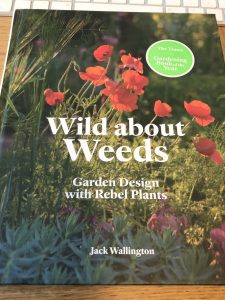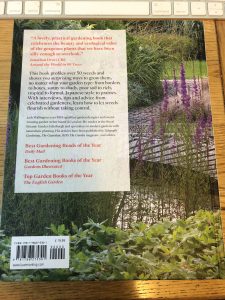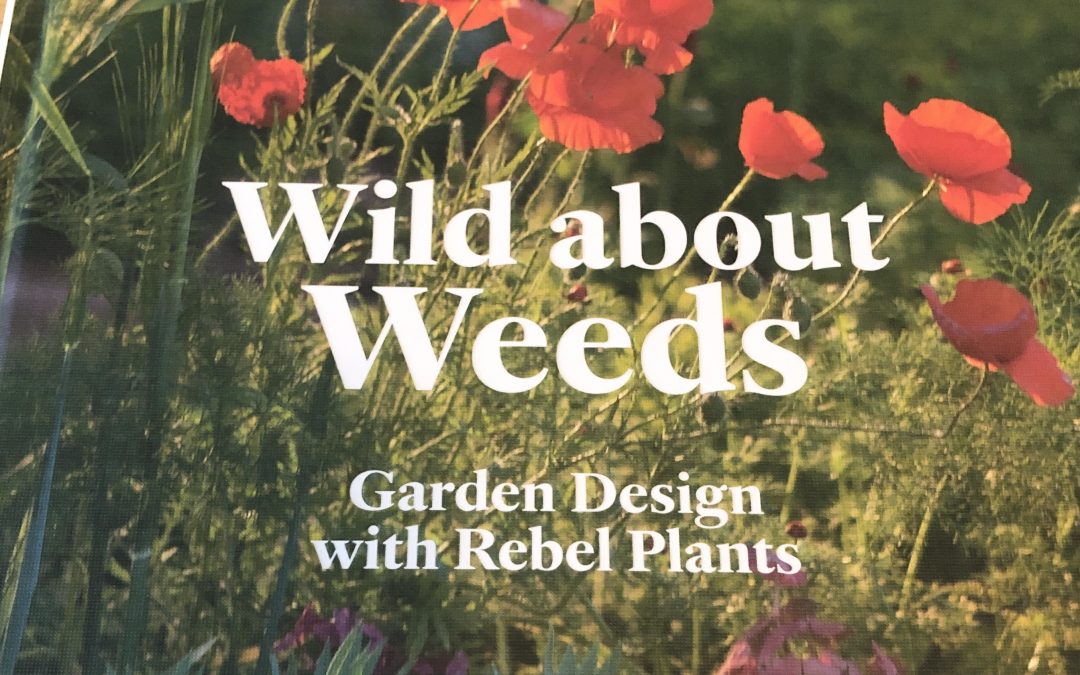All the photographs on this blog have been taken by us and are owned by Mr & Mrs Gardens Limited. They are not photographs from the book, Wild About Weeds.
Wild About Weeds – Book Review
There are certain plants that may be regarded as weeds that I like growing in my garden, such as Forget-Me-Nots, Bluebells, and Primroses. There are others, that under no circumstances would I even consider letting grow in my own garden. I am not Wild About Weeds such as Giant Hogweed, Japanese Knotweed, and Himalayan Balsam. I personally regard these 3 weeds as the unholy trinity of weeds. If I add Horsetail, Rosebay Willowherb, Ground Elder, Brambles, and Bindweed to that list then this to me would not be a garden. Instead, to me, this would be an area left to grow wild. It’s not to say I do not enjoy wild areas. I do. Indeed, every one of these weeds are growing within 500 metres of my front door. My garden backs on to a railway line, and nature enjoys uninterrupted growth from near my rear boundary up to the rocky embankment of the rail tracks. All these weeds, and more, grow along the railway line. This book is mostly about all those weeds that sit somewhere between plants I enjoy growing in my garden and those I really would not like to find growing in any garden. Jack Wallington says weeds deserve a chance to be looked at in a different way. He encourages garden designers, gardeners and readers to introduce these weeds into their gardens and garden design, together with hints, tips, advice and some caveats.
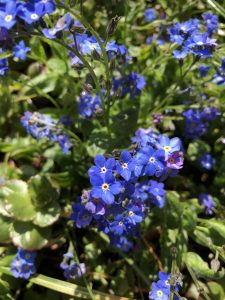
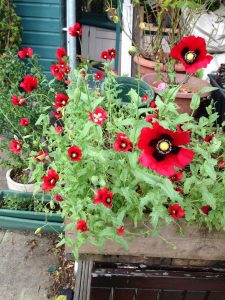
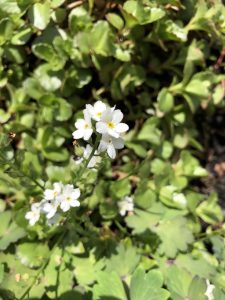
The book begins with looking at what makes a plant a weed. The author comes at this very much from an appreciative standpoint. There can be no doubt about Jack Wallington’s love and knowledge of plants, even if many of us might regard those plants as weeds. A weed isn’t just a plant in the wrong place, it’s also a plant that spreads easily, and is often frustratingly difficult to contain and control. Sometimes this can be desirable if one is looking for a good ground covering plant. However, if that good ground covering plant dominates and eliminates many other plants in the process, and also finds its way to places it was never invited nor wanted, then it is very likely that plant will find itself labelled as a weed.
Before the book goes on to look at the weeds themselves, there is a section on designing spaces to include weeds rather than exclude them. There is also a small section on weeds that even the author wouldn’t recommend, many of which I have mentioned above. The book also gives advice and tips on how to collect weed seeds, moving weeds, and encouraging and managing weeds.
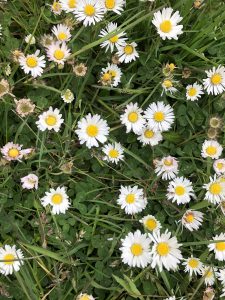
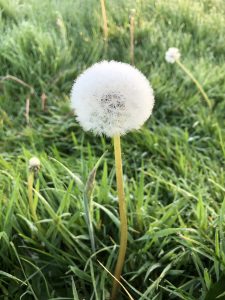
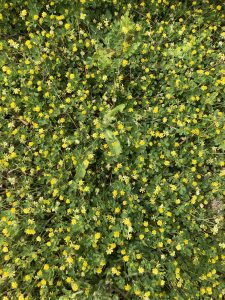
The main section of the book looks at each weed individually, and separates them into weeds that are good for every situation, weeds that are good for poor soil, meadows, shade, damp areas, ground cover, pots, walls, and big open spaces. There is something for everyone to enjoy here. Each weed is given a score for ease of care, effort and rebelliousness. There are discussions around the invasiveness of the plant and how to introduce that weed into your garden. I particularly enjoyed the ‘Did you know?’ paragraphs. They actually made me realise how much I didn’t know. I enjoy learning so it’s no surprise these sections were a favourite of mine.
Throughout the main section of the book there are also pages devoted to gardeners who share the author’s love of weeds. These 5 featured gardeners discuss how they introduce weeds and wild planting into their garden designs. These pages are set out like a Question and Answer session with each gardener. It’s always interesting when I read about the views of other gardeners. I enjoyed reading through these sections.
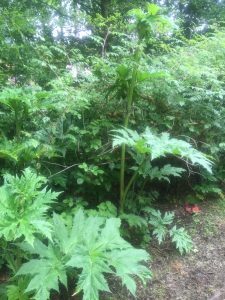
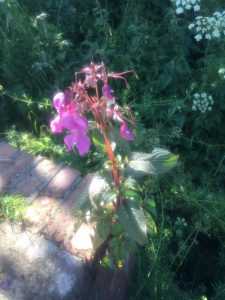
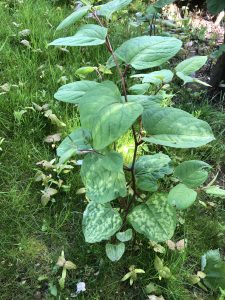
The author encourages the reader to be a rebel when it comes to planting – encouraging us to try a plant that may well be regarded as a weed. I might. I do enjoy a few poppies popping up in my garden. Unfortunately, many of these rebellious weeds may well be best suited to a more rebellious gardener than myself. I just can’t bring myself to introduce many of the weeds in this book into my small garden. For example, I’m not bringing Celandine anywhere near my garden, and I don’t want rushes in there either, and after finally getting rid of the last fern in my garden I really don’t want to bring them back. As for Cow Parsley and Ragwort, no chance. No way. I enjoy seeing these plants growing in green spaces in towns and cityscapes, but not in my small 10 metre x 10 metre garden. I have no doubt that if a garden designer was tasked with creating a green space within a village, town or city, or perhaps within a much larger garden, or in a cottage style garden, then they may well consider introducing many of the weeds set out in this book.
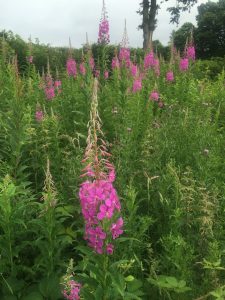
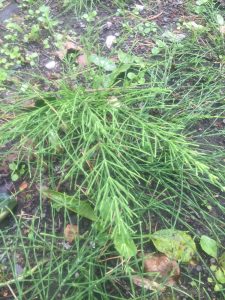
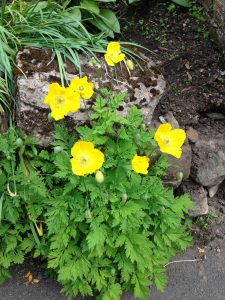
Summary
I do share the author’s love of plants, however I do not wish to invite many of the weeds in his book into my small garden. Sorry. The author isn’t actually asking us to invite all the weeds in his book into our gardens anyway. Phew! Instead he is helping us look at plants that are regarded as weeds in some situations, and suggesting they may well be regarded as a good plant to consider in other situations. And, if that leads us to consider bringing in just a few of these weeds then that’s great. In reality, we will already have some of these weeds in our gardens. I come from a view that no garden is ever weed free, and I’m comfortable and glad this is the case.
I enjoyed reading about the weeds in this book. It improved my knowledge, and I will certainly look at weeds in a new way. I will also revisit the book regularly throughout the year as I spot these weeds growing in the green spaces I enjoy.
Whether you are an experienced gardener or new to gardening I think you will enjoy this book. You do not have to embrace every weed in the book. That’s not what it’s about. However, the book does give a different perspective on planting with nature in mind, and I liked that. The book would also make a great gift if you are thinking about what to buy someone who enjoys gardening and gardens.
Michael
Mr & Mrs Gardens Limited
